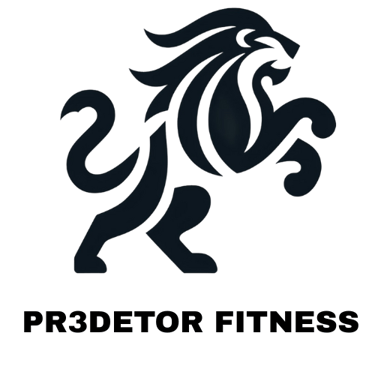10 Strategies to Build Muscle with Barbell Exercises and Heavy Deadlifts
Coach Gabe
5/3/20243 min read


Introduction
Building muscle is a goal that many individuals strive for, and incorporating barbell exercises, particularly heavy deadlifts, into your workout routine can be an effective way to achieve this. In this article, we will explore 10 strategies to build muscle while using the barbell and heavy deadlifts. Additionally, we will contrast the differences between using machines and the barbell itself, and highlight the benefits of heavy deadlifts for both men and women.
1. Progressive Overload
One of the key strategies to build muscle while using the barbell and heavy deadlifts is to implement progressive overload. This involves gradually increasing the weight you lift over time, challenging your muscles to adapt and grow stronger. By consistently pushing your limits and adding weight to the barbell, you stimulate muscle growth and development.
2. Compound Movements
The barbell and heavy deadlifts are excellent for building muscle because they are compound movements. Compound exercises involve multiple muscle groups and joints working together, allowing you to lift heavier weights and engage more muscles simultaneously. This leads to greater muscle activation and overall strength gains.
3. Proper Form and Technique
While using the barbell and performing heavy deadlifts, it is crucial to prioritize proper form and technique. Maintaining a neutral spine, engaging the core, and using the correct grip are essential for safety and maximizing muscle activation. It is advisable to seek guidance from a qualified trainer to ensure you are performing these exercises correctly.
4. Targeting Multiple Muscle Groups
When using the barbell and heavy deadlifts, various muscle groups are targeted. These include the quadriceps, hamstrings, glutes, lower back, upper back, and grip muscles. By incorporating deadlifts into your routine, you can effectively work multiple muscle groups, leading to balanced muscular development.
5. Increased Hormone Production
Heavy deadlifts, especially when performed with the barbell, have been shown to increase hormone production. The release of hormones like testosterone and growth hormone plays a vital role in muscle growth and repair. By incorporating heavy deadlifts into your workout routine, you can naturally boost your hormone levels, further enhancing muscle-building potential.
6. Versatility and Accessibility
One of the significant advantages of using the barbell for muscle building is its versatility and accessibility. Barbell exercises can be performed in various settings, such as a home gym or a commercial gym. Additionally, the barbell allows for a wide range of exercises, including deadlifts, squats, bench presses, and overhead presses, providing ample opportunities to target different muscle groups.
7. Differences from Machine Exercises
When comparing barbell exercises, particularly heavy deadlifts, to machine exercises, several differences become apparent. Machines often isolate specific muscle groups, while barbell exercises engage multiple muscle groups simultaneously. This makes barbell exercises more functional and applicable to real-life movements. Additionally, machines typically have predetermined movement patterns, whereas barbell exercises require greater stabilization and coordination, leading to improved overall strength and muscle development.
8. Benefits of Heavy Deadlifts for Men
Heavy deadlifts offer numerous benefits for men. Firstly, they are excellent for building overall strength and power, as they engage multiple muscle groups, including the lower back, glutes, and hamstrings. Additionally, heavy deadlifts can enhance testosterone production, which is crucial for muscle growth and development. Lastly, deadlifts can improve posture and core stability, leading to better overall body mechanics and reduced risk of injury.
9. Benefits of Heavy Deadlifts for Women
Contrary to popular belief, heavy deadlifts are equally beneficial for women. They can help women build overall strength, increase muscle tone, and improve body composition. Deadlifts also target the glutes and hamstrings, which are common areas of concern for many women. Moreover, heavy deadlifts can enhance bone density, reducing the risk of osteoporosis, a condition more prevalent in women.
10. Injury Prevention and Rehabilitation
Using the barbell and performing heavy deadlifts can contribute to injury prevention and rehabilitation. By strengthening the muscles and connective tissues involved in deadlifting, you can improve joint stability and reduce the risk of injuries, especially in the lower back and knees. Additionally, deadlifts can be incorporated into rehabilitation programs to help individuals recover from certain injuries, such as lower back pain or hamstring strains.
Conclusion
Incorporating the barbell and heavy deadlifts into your workout routine can be an effective strategy for building muscle. By implementing progressive overload, focusing on compound movements, maintaining proper form, and targeting multiple muscle groups, you can optimize your muscle-building potential. Furthermore, the versatility and accessibility of barbell exercises, along with the numerous benefits they offer for both men and women, make them a valuable addition to any strength training program. Whether you are a beginner or an experienced lifter, the barbell and heavy deadlifts can help you achieve your muscle-building goals.
